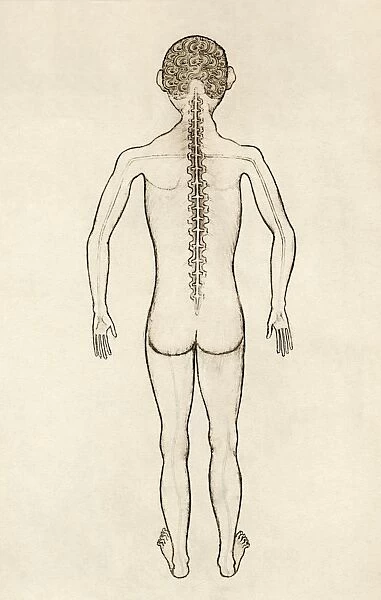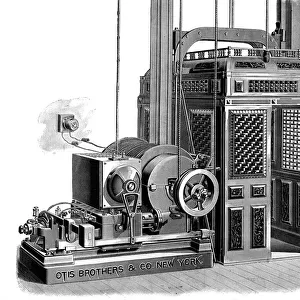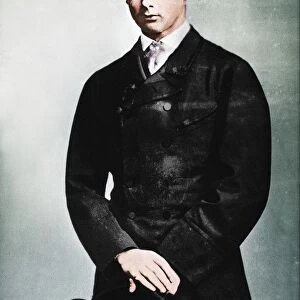Spinal anatomy, 14th century artwork
![]()

Wall Art and Photo Gifts from Science Photo Library
Spinal anatomy, 14th century artwork
Spinal anatomy, 14th century artwork. The spinal cord is shown running down the back, with eighteen spinal nerves braching off through holes in the vertebrae (spinal bones) to reach the rest of the body. The artwork is from Anathomia (1345), by the Italian anatomist Guido da Vigevano. The brain and spinal anatomy drawings in this manuscript are considered the first accurate human neuroanatomical drawings
Science Photo Library features Science and Medical images including photos and illustrations
Media ID 6448115
© SHEILA TERRY/SCIENCE PHOTO LIBRARY
1345 14th Century Anathomia Back Back Bone Bones Dissected Early Guido Da Vigevano History Of Science Italian Mediaeval Medieval Middle Ages Nerve Nerves Neuroscience Rear Spinal Spinal Cord Spinal Nerve Spinal Nerves Vertebra Vertebral Column Fossa Mono Chrome Neurological Neurology Vertebrae
EDITORS COMMENTS
This 14th-century artwork, titled "Spinal Anatomy" offers a glimpse into the intricate understanding of human neuroanatomy during medieval times. Created by Italian anatomist Guido da Vigevano and featured in his renowned manuscript Anathomia (1345), these drawings are considered the earliest accurate depictions of the human nervous system. In this monochromatic illustration, we witness the spinal cord gracefully descending along the back, while eighteen spinal nerves branch out through holes in the vertebrae to reach various parts of the body. The meticulous attention to detail showcases both scientific precision and artistic finesse. The historical significance of this piece lies not only in its portrayal of spinal anatomy but also as a testament to Europe's intellectual pursuits during that era. It serves as a reminder that even centuries ago, scholars were dedicated to unraveling the mysteries hidden within our bodies. As we observe this masterpiece, we are transported back in time to an age where knowledge was painstakingly acquired through dissection and observation. This artwork stands as a symbol of progress in neuroscience and highlights how far our understanding has evolved since then. Science Photo Library brings us this remarkable print, allowing us to appreciate both its aesthetic beauty and scientific importance. It is a window into history—a visual representation of humanity's relentless quest for knowledge about ourselves and our world.
MADE IN AUSTRALIA
Safe Shipping with 30 Day Money Back Guarantee
FREE PERSONALISATION*
We are proud to offer a range of customisation features including Personalised Captions, Color Filters and Picture Zoom Tools
SECURE PAYMENTS
We happily accept a wide range of payment options so you can pay for the things you need in the way that is most convenient for you
* Options may vary by product and licensing agreement. Zoomed Pictures can be adjusted in the Cart.






